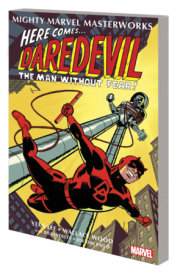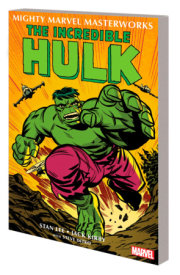Writer/editor Stan Lee (1922-2018) made comic-book history together with Jack Kirby in 1961 with Fantastic Four #1. The monumental popularity of its new style inspired Lee to develop similarly themed characters — including the Hulk and X-Men with Kirby, Spider-Man and Doctor Strange with Steve Ditko, and Daredevil with Bill Everett. After shepherding his creations through dozens of issues — in some cases a hundred or more — Lee allowed other writers to take over, but he maintained steady editorial control. Eventually, he helped expand Marvel into a multimedia empire. In recent years, his frequent cameo appearances in Marvel’s films established Lee as one of the world’s most famous faces.
After co-creating DC’s Swamp Thing in 1972, Len Wein moved to Marvel for lengthy runs on some of the company’s biggest titles — Amazing Spider-Man, Fantastic Four, Incredible Hulk and Thor — and helped bring the landmark Giant-Size X-Men #1 into the world, changing Marvel forever. Returning to DC as an editor, Wein oversaw an influx of British writing talent, highlighted by Alan Moore’s historic Watchmen miniseries. Wein also has worked in television and animation, returning to his roots to develop a Swamp Thing screenplay. He has written comic-book adaptations of The Simpsons and Futurama.
In addition to runs on Fantastic Four and Thor, original Moon Knight scribe Doug Moench specialized in writing features outside the Marvel mainstream — including Adventure into Fear’s Morbius, Frankenstein, Inhumans, Ka-Zar: Lord of the Hidden Jungle, Master of Kung Fu, Werewolf by Night and Astonishing Tales’ Deathlok. Proving his eclectic abilities, he also wrote the full run of Godzilla, most of Shogun Warriors and stories for virtually every Marvel black-and-white magazine of the 1970s. He expanded on his Star-Lord and Weirdworld sagas in multiple anthology titles. At DC, he wrote memorable runs on Batman, Detective Comics and Legends of the Dark Knight — along with numerous Batman one-shots, cross-company crossovers and Elseworlds sagas. He further contributed such short-lived but unique series as Electric Warrior, Lords of the Ultra-Realm, Slash Maraud, Wanderers and Xenobrood.
Born Jacob Kurtzberg in 1917 to Jewish-Austrian parents on New York’s Lower East Side, Jack Kirby came of age at the birth of the American comic book industry. Beginning his career during the rising tide of Nazism, Kirby and fellow artist Joe Simon created the patriotic hero Captain America. Cap’s exploits on the comic book page entertained millions of American readers at home and inspired U.S. troops fighting the enemy abroad. When World War II ended, the public’s interest in super heroes waned; Kirby turned his artistic talents during the 1950s to other genres, such as monsters, Westerns and crime — as well as the first-of-its-kind Young Romance Comics. In 1961, Kirby returned to super heroes to illustrate what would become the defining issue in Marvel Comics history: Fantastic Four #1. Written by Stan Lee, the team’s debut revolutionized the industry overnight. In contrast to the staid artwork of his predecessors, Kirby’s illustrations seemed to leap off the page with eye-popping action and drama. For the next decade, Kirby and Lee would introduce a mind-boggling array of new characters — including the Avengers, the Hulk, Thor, Iron Man, the Silver Surfer and the X-Men. Taken together, Kirby’s groundbreaking work with Lee formed the foundation of the Marvel Universe. In the early 1970s, Kirby moved to DC Comics, where his boundless creativity continued. He returned to Marvel in 1975, writing and illustrating Captain America and introducing his final major concept, the Eternals. With the explosion of TV animation during the 1980s, Kirby’s talents turned to the small screen. Comic fans quickly recognized his work on such series as Thundarr the Barbarian and Turbo Teen. Kirby died in 1994, but his influence on the comic book industry is as strong as ever. His work has inspired a generation of professional artists and modern writers who continue to explore his vast universe of concepts and characters.
Artist George Pérez made team titles his specialty with runs on Marvel’s Avengers and Fantastic Four, along with DC’s Justice League of America and New Teen Titans, the latter co-created with Marv Wolfman. The pair redefined the DC Universe in Crisis on Infinite Earths. In collaboration with writer Kurt Busiek, he returned to Avengers following the “Heroes Reborn” event. The pair surpassed expectations with JLA/Avengers, a 2003 crossover that featured nearly every member of both long-running teams.
Bill Sienkiewicz has had a major impact on the comic-book field with his innovative blend of collage, illustration techniques and storytelling. His influential work has garnered industry-wide acclaim and earned him nearly every major comic-book illustration award in the United States and abroad. His credits include a groundbreaking collaboration with Chris Claremont on New Mutants; Elektra: Assassin, for which he received the prestigious Yellow Kid Award; the Marvel Graphic Novel Daredevil: Love and War; and the critically acclaimed Stray Toasters, which he wrote and illustrated. In addition to his work in the comic-book industry, Sienkiewicz has added his talents to TV and movie projects, including the film Unforgiven and the animated series Where in the World Is Carmen Sandiego?, for which he received two Emmy nominations. Sienkiewicz was also selected to produce the artwork for the critically acclaimed painted biography Voodoo Child: The Illustrated Legend of Jimi Hendrix, published by Viking Press. He divides his time between comic books and classic illustration, with his work continuing to inspire a new generation of innovative artists.


![X-FACTOR BY PETER DAVID OMNIBUS VOL. 1 LARRY STROMAN COVER [NEW PRINTING]](https://images.penguinrandomhouse.com/cover/9781302963705?width=180)

![WOLVERINE GOES TO HELL OMNIBUS JAE LEE COVER [NEW PRINTING]](https://images.penguinrandomhouse.com/cover/9781302961381?width=180)


![MARVEL MASTERWORKS: THE SILVER SURFER VOL. 1 [REMASTERWORKS]](https://images.penguinrandomhouse.com/cover/9781302956042?width=180)
![THE FANTASTIC FOUR OMNIBUS VOL. 1 ALEX ROSS COVER [NEW PRINTING 3]](https://images.penguinrandomhouse.com/cover/9781302963682?width=180)

![SILVER SURFER OMNIBUS VOL. 1 JOHN BUSCEMA FIRST ISSUE COVER [NEW PRINTING 2]](https://images.penguinrandomhouse.com/cover/9781302963583?width=180)



![MARVEL MASTERWORKS: CAPTAIN AMERICA VOL. 1 [REMASTERWORKS]](https://images.penguinrandomhouse.com/cover/9781302956028?width=180)
![MARVEL MASTERWORKS: THE FANTASTIC FOUR VOL. 3 [REMASTERWORKS]](https://images.penguinrandomhouse.com/cover/9781302956004?width=180)


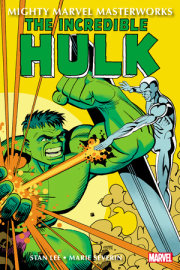


![FANTASTIC FOUR EPIC COLLECTION: WORLD'S GREATEST COMIC MAGAZINE [NEW PRINTING 2]](https://images.penguinrandomhouse.com/cover/9781302960421?width=180)
![CAPTAIN AMERICA OMNIBUS VOL. 2 CARLOS PACHECO COVER [NEW PRINTING]](https://images.penguinrandomhouse.com/cover/9781302958398?width=180)
![INCREDIBLE HULK EPIC COLLECTION: MAN OR MONSTER? [NEW PRINTING 2]](https://images.penguinrandomhouse.com/cover/9781302960438?width=180)

![MARVEL MASTERWORKS: THE AMAZING SPIDER-MAN VOL. 3 [REMASTERWORKS]](https://images.penguinrandomhouse.com/cover/9781302951429?width=180)
![THE INVINCIBLE IRON MAN OMNIBUS VOL. 2 SALVADOR LARROCA COVER [NEW PRINTING]](https://images.penguinrandomhouse.com/cover/9781302958992?width=180)


![MARVEL MASTERWORKS: THE AVENGERS VOL. 2 [REMASTERWORKS]](https://images.penguinrandomhouse.com/cover/9781302951405?width=180)
![AVENGERS EPIC COLLECTION: EARTH'S MIGHTIEST HEROES [NEW PRINTING]](https://images.penguinrandomhouse.com/cover/9781302957988?width=180)
![CAPTAIN AMERICA EPIC COLLECTION: BUCKY REBORN [NEW PRINTING]](https://images.penguinrandomhouse.com/cover/9781302957858?width=180)

![CAPTAIN AMERICA OMNIBUS VOL. 1 [NEW PRINTING 2]](https://images.penguinrandomhouse.com/cover/9781302957995?width=180)

![X-MEN EPIC COLLECTION: CHILDREN OF THE ATOM [NEW PRINTING 2]](https://images.penguinrandomhouse.com/cover/9781302957834?width=180)



![AMAZING SPIDER-MAN EPIC COLLECTION: THE SECRET OF THE PETRIFIED TABLET [NEW PRINTING]](https://images.penguinrandomhouse.com/cover/9781302957810?width=180)
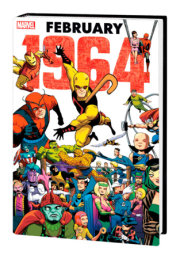






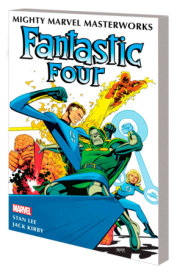
![AMAZING SPIDER-MAN EPIC COLLECTION: GREAT RESPONSIBILITY [NEW PRINTING]](https://images.penguinrandomhouse.com/cover/9781302950576?width=180)
![DAREDEVIL EPIC COLLECTION: MIKE MURDOCK MUST DIE! [NEW PRINTING]](https://images.penguinrandomhouse.com/cover/9781302950569?width=180)



![THE INVINCIBLE IRON MAN OMNIBUS VOL. 1 [NEW PRINTING]](https://images.penguinrandomhouse.com/cover/9781302953584?width=180)
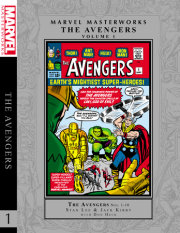
![THE AMAZING SPIDER-MAN OMNIBUS VOL. 4 [NEW PRINTING]](https://images.penguinrandomhouse.com/cover/9781302952570?width=180)

![THE AVENGERS OMNIBUS VOL. 1 [NEW PRINTING]](https://images.penguinrandomhouse.com/cover/9781302953546?width=180)

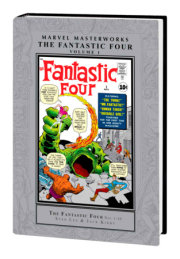








![FANTASTIC FOUR EPIC COLLECTION: THE COMING OF GALACTUS [NEW PRINTING 2]](https://images.penguinrandomhouse.com/cover/9781302950415?width=180)

![AMAZING SPIDER-MAN EPIC COLLECTION: THE GOBLIN LIVES [NEW PRINTING]](https://images.penguinrandomhouse.com/cover/9781302950392?width=180)
![DAREDEVIL EPIC COLLECTION: THE MAN WITHOUT FEAR [NEW PRINTING]](https://images.penguinrandomhouse.com/cover/9781302950361?width=180)
![ANT-MAN/GIANT-MAN EPIC COLLECTION: THE MAN IN THE ANT HILL [NEW PRINTING]](https://images.penguinrandomhouse.com/cover/9781302950354?width=180)








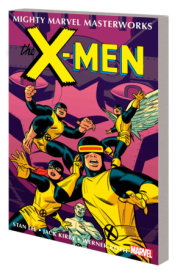



![THE INCREDIBLE HULK OMNIBUS VOL. 1 [NEW PRINTING]](https://images.penguinrandomhouse.com/cover/9781302933869?width=180)
